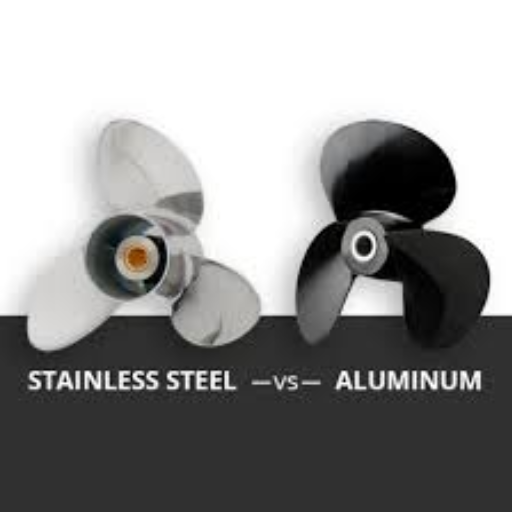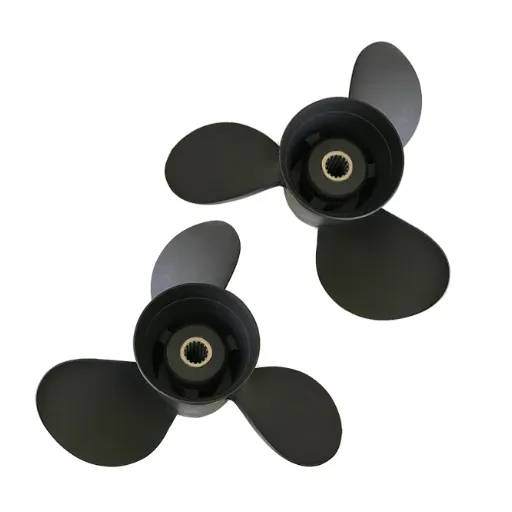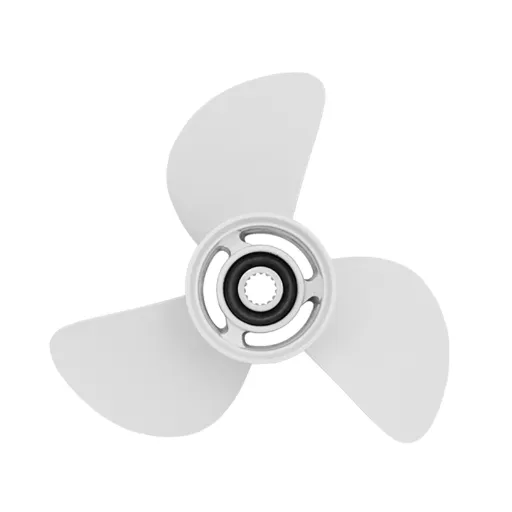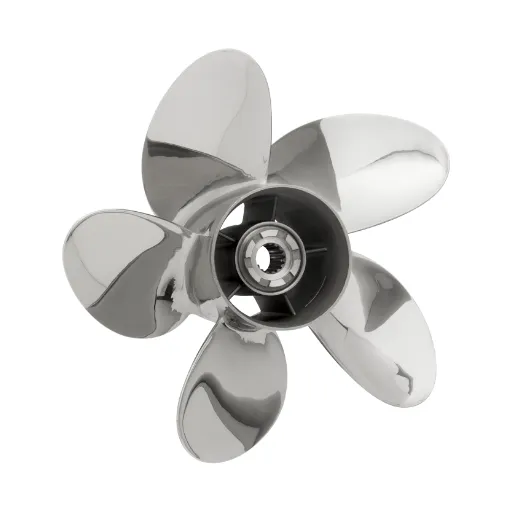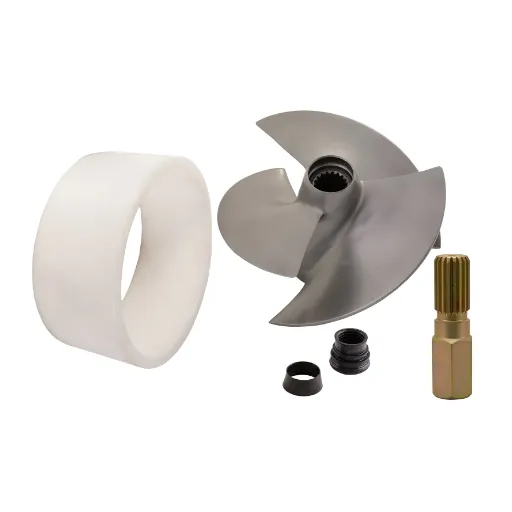Choosing the right propeller often comes down to choosing the actual material: stainless steel or aluminum. These materials have their own set of pros and cons for differing requirements. How do you know what the best choice for your boat and boating lifestyle might be? This article explores the primary considerations between stainless steel and aluminum propellers, including performance, durability, cost, and suitability across various applications. For the casual boater or the dedicated enthusiast, knowledge of these items enables the best choice, resulting in optimal performance and the longest longevity for the boat. Please read on to discover clues that will lead you to your perfect propeller.
Understanding Propeller Materials

An Aluminum & Stainless Steel Panoramic Comparison
When considering aluminum versus stainless steel propellers, it is essential to define their apparent characteristics and strengths and limitations to determine which one best meets your needs. Aluminum propellers are typically regarded as lightweight, inexpensive, and versatile. They generally suit smaller boats, such as recreational crafts or fishing boats, and are typically the choice for casual boat owners. Their inexpensive nature makes them highly accessible to a larger demographic, but they might not have the strength necessary for more intense work, as aluminum can bend under impact or be damaged under rough conditions.
On the other hand, stainless steel propellers offer the best performance and durability, making them suitable for high-speed boats, large crafts, and any marine environment where reliability is a top priority. Stainless steel is denser and stronger than aluminum, allowing propeller blades to be thinner and more efficient, which in turn enables faster acceleration. Resistance to wear ensures it remains in place for a longer time, making stainless steel even more suitable in challenging water conditions. In contrast, the high price of stainless steel propellers may deter you, given your budget.
For this reason, stainless steel propellers are renowned for their anti-corrosive properties. This corrosion resistance is especially necessary in saltwater, where aluminum tends to degrade faster without proper maintenance. Hence, in choosing between the two propeller materials, boaters should consider the vessel type, the operating conditions, and long-term maintenance needs to arrive at an informed decision. Each material offers an advantage, allowing for the fulfillment of any type of boating requirement.
Key Differences Between Aluminum and Stainless Steel Props
Since the performance, durability, price, and specific application of the two types of propellers vary, a comparison of the pros and cons of aluminum versus stainless steel is necessary to determine which is the most appropriate. Aluminum is a lightweight and less expensive material, making it a preferred choice for casual or recreational boating. Aluminum propellers are generally easier to repair when damaged and provide satisfactory performance for smaller to medium-sized vessels operating at moderate speeds.
Then again, stainless steel props are heavier, more durable, and arguably perform better at high speeds or in adverse conditions. They do not bend with pressure, giving better acceleration and fuel savings. According to recent studies, top speeds could be improved by 3-5% when compared to aluminum props due to the rigidity of stainless steel blades. Furthermore, it bends far less over time, reducing performance loss, making it the best choice for performance buffs or larger and heavier boats to carry.
Apart from the material difference, cost is a significant consideration. Aluminum props are typically more affordable, with prices often ranging from $100 to $300, whereas stainless steel ones can cost anywhere from $400 to $800 or more, depending on the design and brand. However, the upfront cost of stainless steel may well be worth it in terms of resale lifespan and overall efficiency.
Ultimately, one chooses between aluminum or stainless steel props depending on the size of the boat, typical working conditions, and expected performance specifications. A boater who is aware of these factors will certainly commit to the one propeller that suits his specific requirements and that will give him more enjoyment on the water.
Material Importance for Boat Owners
Propeller selection is a crucial decision for boat owners, particularly in terms of performance, operational efficiency, bearing durability, and maintenance costs. Aluminum propellers are lighter and less expensive than those made from other materials. They are suitable for casual or recreational boating, typically performing well in calm waters. An aluminum propeller is easier to mend if damaged. For the ultimate in durability and performance, stainless steel remains the best choice. Most durable and corrosion-resistant, a stainless steel propeller offers more precise handling, allowing boats to achieve better acceleration and their optimal cruise speeds.
In assessing materials, one must consider the usual boating conditions and demands. Aluminum offers a more cost-effective choice for lakes and rivers, where impact risks are minimal. Stainless steel, on the other hand, can withstand conditions that favor wear in coastal waters. Fuel efficiency and maintenance costs, which are worth considering, could also be affected by the material chosen, with special considerations for the eco-friendly and budget-conscious owner.
Keeping in mind the specific properties and advantages of each material, it becomes easier for boat owners to make informed decisions that support their intentions of achieving optimal performance and extending the life of their vessel.
Durability and Performance: A Comparative Analysis
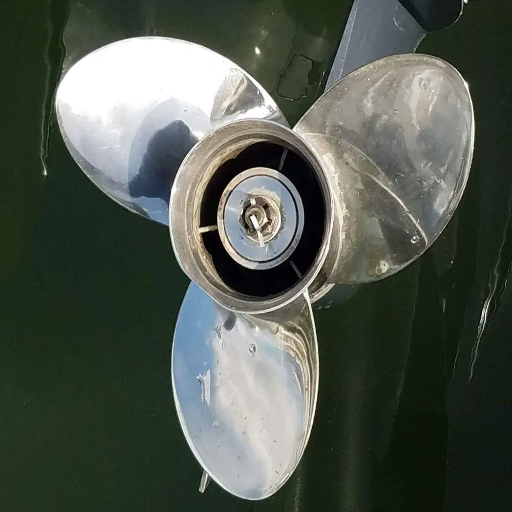
Corrosion Resistance: Aluminum vs Stainless Steel
The question then arises regarding the resistance of both metals to corrosion. In this respect, each metal presents characteristics that can be considered advantages, depending on the exact application or environment. Aluminum is naturally corrosion-resistant, as it forms a protective oxide coat as soon as it is exposed to air. In marine environments, this feature makes aluminum suitable, as such environments provide a lot of moisture and salt that could harm other metals. However, it is subject to galvanic corrosion when in contact with more noble metals in an electrolyte-rich environment, such as seawater.
By contrast, stainless steel benefits from a chromium content that serves to resist corrosion through the formation of a passive film of chromium oxide. It follows that this film may be self-repairing and therefore does a better job of protecting the material against rust and tarnish. Additionally, stainless steels perform best in heavy-duty environments or when exposed to high salinity for extended periods, as exemplified by certain marine-grade alloys, such as 316 stainless steel.
The data show that aluminum may be lighter, whereas stainless steel is better suited for environments that require resistance to pitting and crevice corrosion; this is especially important in components that are alternately exposed to water depth or chemically aggressive environments. Ultimately, the choice between aluminum and stainless steel for corrosion resistance depends on the environment itself, as both maintenance and the desired lifetime of the application are equally important.
Effect on Fuel Economy and General Performance
The choice between aluminum and stainless steel plays a critical role in influencing fuel economy and overall performance across various industries, with the automotive and aerospace sectors being particularly notable considerations. The lightness of aluminum results in a significant reduction in vehicle weight, positively impacting fuel efficiency. Studies have found that a 10% weight reduction of the vehicle can increase fuel economy by 6-8%, thereby enhancing cost savings and environmental benefits. Consequently, aluminum may be preferred in electric vehicles and fuel-efficient aircraft designs.
In contrast to the aluminum extrusion, stainless steel affords extended durability and resistance to extreme conditions, implying long-term performance and reliability. Even though stainless steel is heavier than aluminum, its strength-to-weight ratio ensures it can be employed in harsh environments, such as heavy-duty transport or maritime applications, where being fully structural is a matter of performance. Finding the best compromise between these materials, based on their performance requirements, optimizes the design outcome. Hence, the industry can find an optimal compromise between fuel economy and durability by matching material properties with both fuel economy targets and durability requirements.
Brand Recommendations for Boat Propellers

Top Brands Offering: Solas and Michigan Wheel
Solas and Michigan Wheel have earned their reputation as great manufacturers due to a commitment to quality, performance, and innovation. Precision engineering and utmost-quality materials (often stainless steel or aluminum) make Solas propellers counterparts of the marine world when it comes to durability and efficiency. They are designed to coexist with various forms of vessels, ranging from recreational boats to heavy-duty marine applications, thereby enhancing fuel economy and performance.
While Michigan Wheel demonstrates that it can provide propellers with a rich history of expertise, combining the most modern designs in hydrodynamics with robust construction, its products range from custom propellers to stock ones that can aid various engines and applications. The use of newer manufacturing techniques enables Michigan Wheel propellers to increase thrust, reduce vibration, and provide consistent performance in diverse water conditions.
Both brands undergo rigorous testing and research to provide boaters with propellers that increase reliability and operational efficiency. Solas and Michigan Wheels propellers will always be the names to trust in performance that is smooth, powerful, and dependable across waters, whether for professional or leisure use. Click here to read more.
Comparing the Propeller Models
While evaluating the propeller models from the two companies — Solas and Michigan Wheel — calls for a few pertinent considerations, chiefly material composition, design features, performance parameters, and adaptability to various marine applications.
Material Composition:
Solas propellers are primarily manufactured from high-quality stainless steel and aluminum alloys. The salient features of these materials include high resistance to corrosion and high durability, making them fit for both saltwater and freshwater environments. Michigan Wheel also offers its propellers in premium stainless steel and aluminum grades, complementing its range with other options in bronze, a material recognized worldwide for its extraordinary strength and classic appeal in marine applications.
Design Features:
These propellers are renowned for their innovative blade geometries, which maximize thrust and fuel efficiency. The exclusive Solas “Rubex” system includes interchangeable hub kits for versatility in installation. On the other hand, the emphasis at the Michigan Wheel is on precision hydrodynamics with blade designs clever enough to offer excellent handling at various speeds. Both the “Vortex” and “Ballistic” lines, in particular, are renowned for their high-speed performance and acceleration, appealing to both recreational and performance-oriented user communities.
Performance Metrics:
Noise reduction and smooth vibration profile were ensured on water with thorough balancing and dynamic design testing procedures. Solas propellers have been designed to maximize engine efficiency and reduce fuel consumption. Michigan Wheel’s propellers are designed to maximize thrust and maintain steady speed ranges, which is particularly important for larger vessels and high-powered engines. Both brands provide propellers for various applications, including fishing, pontoon, and speedboat, which are compatible with a wide range of outboard and inboard engines.
Adaptability:
A notable feature of the two models is their adaptability to various marine engine brands and configurations. Solas offers a wide range of pitch and diameter sizes, catering to various engines from Yamaha, Mercury, Honda, and Suzuki. Michigan Wheel also tends to cater to major engine models, providing further solutions that are customizable to suit the unique needs of each vessel.
Key Takeaways:
Both Solas and Michigan Wheel offer excellent options for choosing a marine propeller; each brand excels in areas that cater to a particular set of user preferences and performance requirements. Solas, in this regard, is unable to compete in terms of engineering precision and fuel efficiency, while Michigan Wheel can be deemed the best for customization and adaptability across a wider range of vessel types. Boaters seeking the best performance, toughness, and reliability will have excellent choices from both brands.
Purchasing the Right Propeller That Suits Your Needs
Selecting the ideal marine propeller then depends on considerations such as material construction, pitch, diameter, and the number of blades to meet specific performance requirements. Aluminum and stainless steel propellers are the most commonly encountered options, with each material offering certain advantages. Aluminum is more cost-efficient and lighter, whereas stainless steel offers higher performance and excellent durability under high-stress situations. One should also be aware of pitch and diameter; low pitches favor acceleration and towing, while high pitches favor top speed. Blade style also matters; in general, three-blade propellers offer higher speed and lower drag, while four-blade ones provide smoother handling characteristics and better fuel economy. Combining these criteria with detailed performance reports from reputable manufacturers allows you to tailor your choice for the best quality-power-efficiency-reliability combination for your specific vessel and activities.
Environmental Considerations in Propeller Selection

Low Emission Trends in Marine Propulsion
To align with the environmental regulators and evolve sustainable methods, the marine industry is slowly transitioning to technologies that offer low-emission propulsion. One of the trends is making hybrid and fully electric propulsion systems a viable alternative to conventional methods, allowing for a greater reduction in greenhouse gas emissions, improved fuel efficiency, and reduced pollutant emissions from engine combustion. These systems are based on advanced battery technologies that support higher energy density, allowing vessels to sail more sustainably over far distances.
On the other hand, the evolution of technology is further fueled by the introduction of LNG, hydrogen, and biofuels as alternative marine fuels. LNG has become attractive because it reduces nitrogen oxide and sulfur oxide emissions, thus offering a cleaner scenario compared to conventional fossil fuels. Hydrogen fuel cells are emerging sources that potentially deliver zero-emission energy, supporting operations that require high performance.
Hull design innovations and energy-saving technologies complement the propulsion systems by reducing drag and contributing to maximum energy efficiency. For example, air lubrication systems and optimized propeller designs reduce energy usage, which is the most effective use of energy in low-emission propulsion configurations. Real-time data-driven monitoring systems give insights into fuel consumption and emission levels, enabling operators to govern in an environmentally conscious manner.
The accommodation of cleaner technologies while maintaining and improving operational efficiencies provides impetus for the field to have a more sustainable outlook on global-level maritime activities.
Eco-Friendly Alternatives: Are They Feasible?
The eco-friendly alternative is promising in mitigating the environmental impacts arising from maritime activities. Advancements in alternative fuels offer massive potential for emission reduction compared to conventional fossil fuels, such as biofuel, hydrogen, and ammonia. Recent industry studies have also suggested that ships powered by ammonia could be almost entirely carbon-free, presenting a promising prospect for long-term sustainability. Hybrid propulsion systems that combine various renewable energy sources offer measurable improvement in efficiency; wind-assisted propulsion and solar panels are examples of such systems.
One demonstration plant implements wind rotor technology as an auxiliary propulsion system and has demonstrated that such a retrofit might save between 10 and 15 percent in fuel consumption. Shore-side power, wherein ships plug into the local electricity grid while in port, has also significantly reduced in-port emissions by eliminating the need for auxiliary engines to be running.
Yet, certain challenges remain, including high implementation costs, infrastructure constraints, and the need for global regulations to ensure widespread adoption. Against these hurdles is the growing trend toward green technologies and their incorporation into the maritime sector’s operations. These alternatives, when further enhanced through innovation and strategic investment, could provide an extra boost to the effort to combine ecological concerns with economic concerns.
Future of Propeller Materials in Sustainable Boating
The future of propeller materials in sustainable boating lies in the fusion of advanced composites and light metals, manufactured by new technologies. Modern materials, such as carbon fiber composites and titanium alloys, are capturing the public’s attention due to their outstanding durability, corrosion resistance, and weight-saving attributes, which further enhance energy efficiency and reduce environmental degradation. Bio-based and recycled materials also provide up-and-coming green alternatives, decreasing dependence on non-renewable resources yet retaining their potential to perform at a high level.
For instance, carbon fiber composite materials impart maximum aerodynamic efficiency to the propellers due to their extremely high strength-to-weight ratio, which maximizes aerodynamic efficiency per unit energy. The improved resistance to marine corrosion of titanium alloys extends propulsion life and reduces maintenance requirements. In addition, customization of designs using 3D printing and additive manufacturing significantly improves hydrodynamic efficiency, further reducing fuel consumption.
Such developments help achieve the maritime industry’s goal of reducing greenhouse gas emissions while adhering to internationally recognized sustainability standards, as outlined by the International Maritime Organization (IMO). Through the use of advanced materials and manufacturing techniques, boat manufacturing is being steered toward a truly sustainable future.
Making the Right Choice: Aluminum or Stainless Steel?
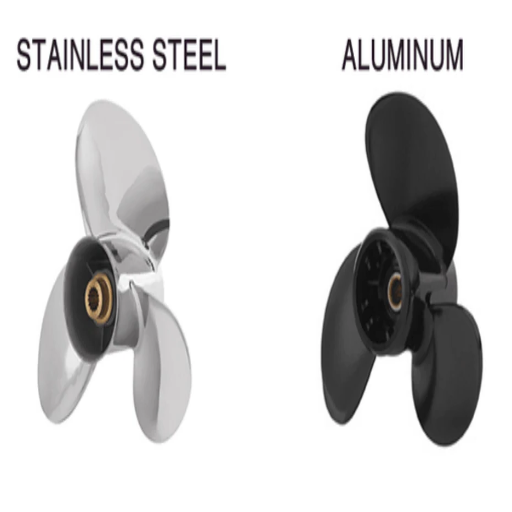
Considerations in Selecting Aluminum or Stainless Steel
In general, several factors influence the decision between aluminum and stainless steel in maritime applications, including performance, sunlight resistance, and durability, as well as cost. Here is a thorough consideration of the choices under discussion, with some key considerations that will assist you in making an informed decision:
Strength and Weight:
Aluminum is significantly lighter than stainless steel and is recommended for any service that requires weight reduction, such as smaller boats or components where performance and speed are paramount. Stainless steel, though, will be a better choice in any situation where strength lies as the foundation under loads, standard stresses, or impacts, against which aluminum is just not going to cut it.
Corrosion Resistance:
Both materials offer corrosion resistance, but their performance varies under different environmental conditions. The aluminum surface forms an oxide layer that acts as a protective cover, allowing it to be used in freshwater or less harsh conditions. Stainless steel, on the other hand, and particularly marine stainless steel (316L), resists pitting and corrosion better in saltwater environments and is therefore a choice material used for offshore and long-term maritime purposes.
Maintenance Requirements:
Being resistant to staining and weathering degradation, stainless steel typically requires minimal maintenance in restricted marine conditions. By contrast, aluminum must be periodically anodized or have its protective coatings renewed to maintain them in corrosive environments.
Cost Efficiency:
While aluminum generally offers a more affordable purchase price compared to stainless steel, the high processing and fabrication costs raise a concern. Being lightweight, this can further reduce the ton-kilometre and fuel costs. Although the initial cost of stainless steel is higher, it offers significant value due to its exceptional lifespan and low maintenance requirements.
Weldability and Fabrication:
The lower melting point of aluminum, combined with its softer nature, enables easier cutting, shaping, and welding; thus, it is preferred when the project requires heavy customization or intricate design. Stainless steel, being more difficult to handle, produces a cleaner and tougher finish better suited to high-precision applications.
Aesthetic Appeal:
Both materials are aesthetically pleasing; however, stainless steel offers a polished finish, which is sleek and modern in nature, making it perfect for a high-end yacht or any decorative component. Aluminum, though, may offer an elegant look if appropriately treated—especially if the treatment includes a process that prevents it from aging and grime, usually favoring function over form.
Key Takeaway:
Aluminum and stainless steel are then selected and evaluated against essential parameters, including strength, weight, environmental resistance, and cost. Aluminum is the preferred choice for lightweight and cost-efficient applications. Using stainless steel is preferred in projects requiring maximum strength, resistance to saltwater corrosion, and an excellent finish. Determining the operating conditions and long-term goals of an application accurately will go a long way in choosing the right material.
Case Studies: Boat Owners’ Experiences
“Aluminum versus stainless steel – there was never an easy choice for outfitting my boat. Aluminum was highly suitable wherever lightweight support was needed, such as in railings and ladders. Being lighter, it was easier to handle and install, besides allowing me to save an extra pound, which was particularly beneficial during longer days of sailing, resulting in more fuel efficiency. Besides, aluminum was economical, an important factor in sticking to the budget while also maintaining quality.
I go for steel when I require strength and corrosion resistance. For instance, I used stainless steel cleats, hinges, and fasteners because they had to withstand the marine environment, including long exposure to saltwater. Polished to a premium finish, stainless steel adds especially to my boat’s aesthetics. After many years, the steel parts are still sound, structurally and rust-free, which, in my opinion, justifies the higher upfront investment.
Ultimately, the decision came down to examining how each material might behave under specific conditions. I considered durability, corrosion resistance, weight, and cost factors while choosing the materials for each particular application on the boat. This approach emphasizes functionality and ensures that the components are long-lasting. This reflective experience now confidently drives me to advocate for a mixed-material approach for any special modifications made to their boat, ensuring the best performance and longevity.”
Final Recommendations for Boat Owners
My personal experience has made me well aware that designing one’s boat truly rests upon a personalized mixed-material approach. This means conducting a thorough analysis of the actual requirements of your vessel, taking into consideration loads, environment, and budget. For example, if hardware is going to be exposed to salt water, then corrosion-resistant metals should be used, while lightweight composites may be used internally to strike a fine balance between resistance and efficiency. Each material is isolated by purpose, and knowing where its uses intersect is necessary for achieving perfection.
Additionally, regular maintenance plays a crucial role in maximizing the boat’s performance and lifespan. Even the best materials require care to maintain their optimal working condition. Regular inspections, cleaning, and maintenance keep small issues from turning into costly liabilities. For instance, paying attention to the situation at interfaces involving different materials allows you to tackle early symptoms of wear or corrosion before they impair the vessel.
This conscious material selection and upkeep have led to enhanced experiences in boating throughout my life. Investing time in understanding your vessel’s unique demands and making informed choices will enable you to enhance your boat’s performance and confidently enjoy joyful moments while afloat. This has worked for me, and I am confident that it will make a difference for other boat owners.
Reference Sources
-
Prop Bites: How To Choose Between Aluminum and Stainless Steel Props – Mercury Marine
Explains the stress tolerance, blade design, and performance differences between stainless steel and aluminum propellers. -
Aluminum vs. Stainless Steel Props: What’s the Difference? – Boats.net
Highlights key differences in weight, stiffness, and how these factors affect horsepower and performance. -
Stainless Steel vs Aluminum Prop: What’s The Difference? – Deep Blue Yacht Supply
Discusses cost, repairability, and performance trade-offs between stainless steel and aluminum propellers.
Frequently Asked Questions (FAQs)
What advantages does a steel prop have over an aluminum prop?
Generally, at high speeds, stainless steel propellers exhibit better performance. Given their strength and durability, they can achieve higher tops and maintain the craft’s stability. Stainless steel propellers have the added advantage of lasting longer than their aluminum counterparts; therefore, it is a good investment for a boat enthusiast. While stainless steel props may be more costly, the benefits of improved fuel economy and a smoother ride in rough seas tend to outweigh the negatives. If you’re choosing a prop that can withstand a hit with minimal deformation, opt for stainless steel.
How different are aluminum and stainless steel props in durability?
The factor of durability and its comparison between aluminum and stainless steel props stands out. Invariably, stainless steel props are tough and resist deformation, making them ideal for high-performance vessels. They get shaped by the working at high rpm and are subjected to rough use and conditions. On the other hand, aluminum props tend to bend and get damaged easily, especially when working in shallow waters or frequently hitting underwater obstructions. Therefore, if durability is a vital consideration, especially for a high-performance motor, stainless steel is the preferred choice.
Do 4-blade stainless steel props improve performance?
In terms of high-performance, especially in the hole shot, and fuel economy-wise, the four-blade prop can do wonders. The additional blade contributes to better thrust and stability, which in turn enhances acceleration and handling at various speeds. A boater aiming for a higher pitch to reach the top, speed can select the 4-blade prop capable of such control. Always balancing this pitch and diameter with your boat’s specifications to ensure compatibility is necessary. It is almost always the better choice if one wants to get the best out of their motor.
What should I look for when making the right prop choice for my boat?
Choosing a suitable propeller is essential for your boat to perform well under its respective conditions. If the prop does not match the boat and motor characteristics, one would lose speed and acceleration. For example, a high-pitch propeller would provide perhaps better top speed with less acceleration, while a low-pitch one would provide better acceleration. Another point is the material; generally, for higher-performance applications, it is better to go with stainless steel. Propellers matching the performative characteristics of a boat should be installed, and a specialist or local prop shop should be consulted to ensure this.
Are aluminum and stainless-steel propellers interchangeable for outboard motors?
Aluminum and stainless steel propellers can go into outboard motors, but they don’t always go interchangeably with each other. Some considerations are hub sizes, pitch, and the specific requirements of the motors. Most outboard motors can carry both, but the difference in performance is quite significant. At higher speeds, stainless steel props offer better performance and durability than aluminum ones, which may be easier to replace and cost less. By noting your specifications, aluminum or steel replacements can be easily found.




